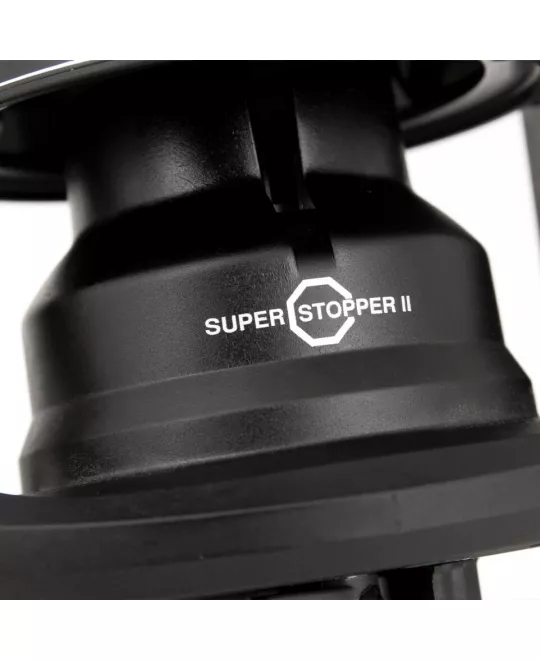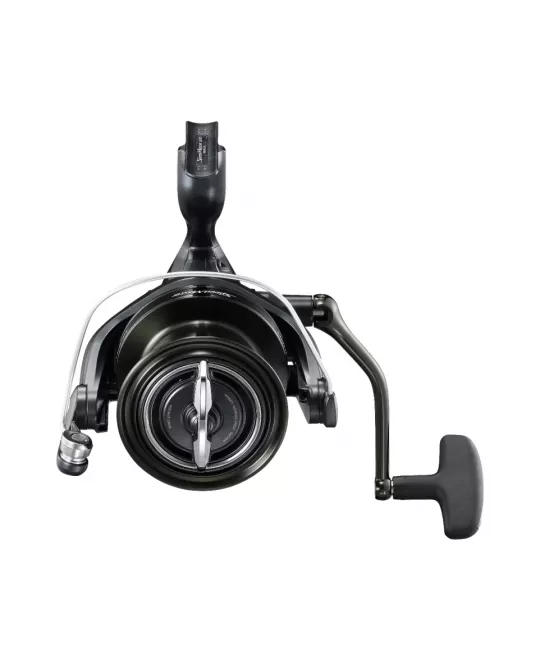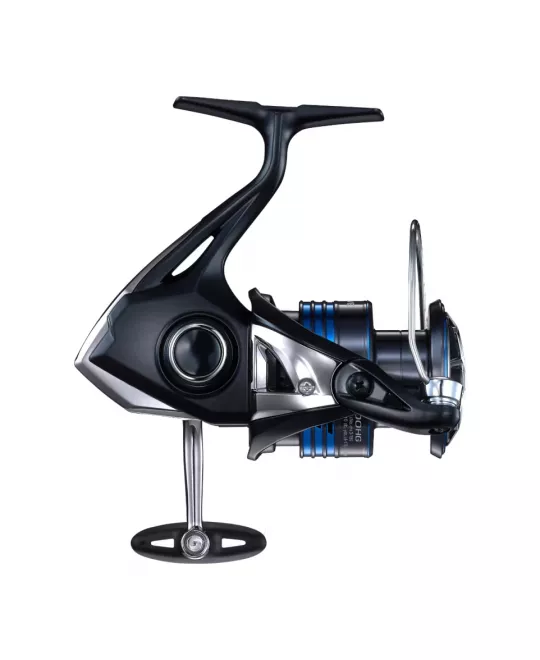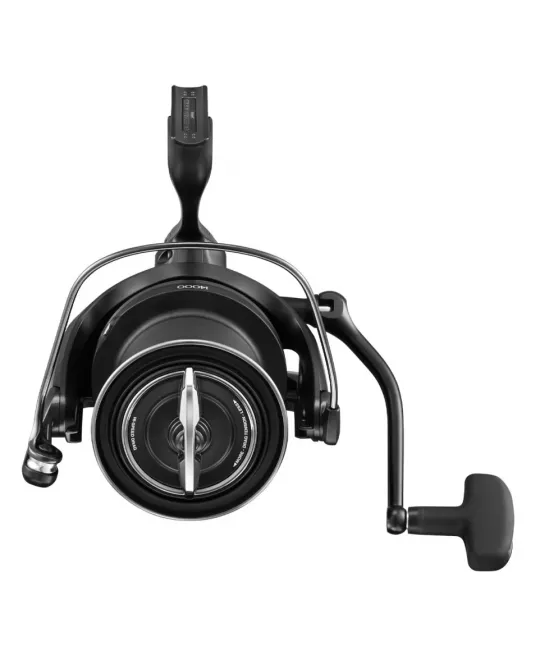| Precise fall control. |
| |
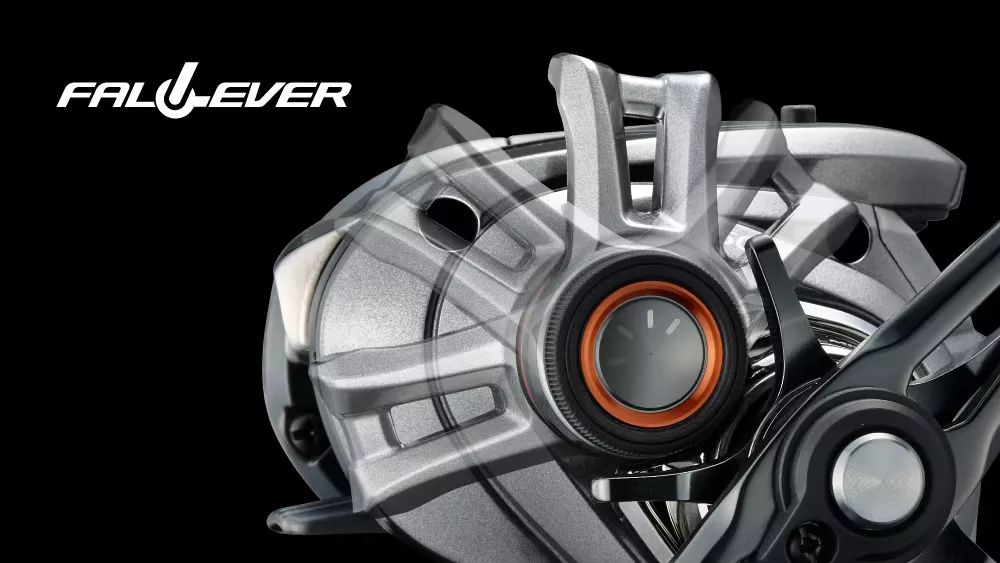 |
| |
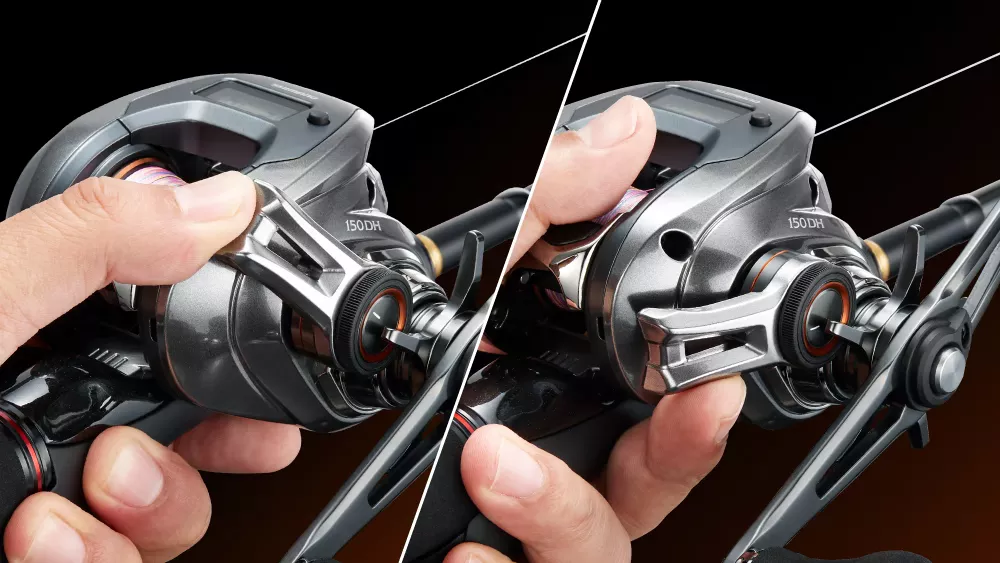 |
| |
|
The so-called fall bite and bait is an important factor in metal squid fishing and various other types of fishing. Depending on the target, it is as important as or even more important than the bait lift. The new fall lever makes it possible to freely adjust and reproduce the fall speed without putting stress on the handle's winding feel. The one-way roller bearing makes it possible to rotate smoothly in the winding direction, and even if you tighten the fall lever, the handle does not become heavy, achieving stable reeling that is not affected by the fall speed.
Furthermore, the lever itself has been designed to be wide with a recess on the top surface, making it easier to place your finger on the lever whether it is in the raised or lowered position, improving operability.
In addition, the field of view has been widened and a counter with new functions such as a winding distance alarm has been installed, which improves the reproducibility of hit patterns by understanding the fall speed and hit range.
|
| |
| |
| It is over 30g lighter than the previous model, making it easy to operate. |
| |
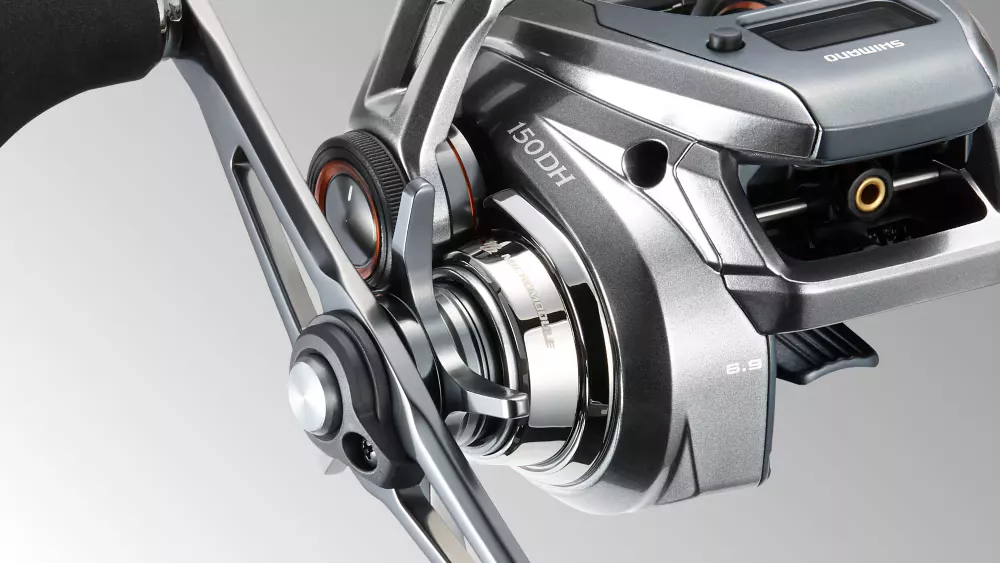 |
| |
|
By reviewing the weight of every detail, starting with the updated side plate of the CI4+, we have succeeded in significantly reducing the overall weight by over 30g despite the HAGANE body. Combined with the easy-to-grip low-profile body design, it provides light operability.
*Compared to the previous model
|
| |
| |
| Specially designed 60mm long handle. |
| |
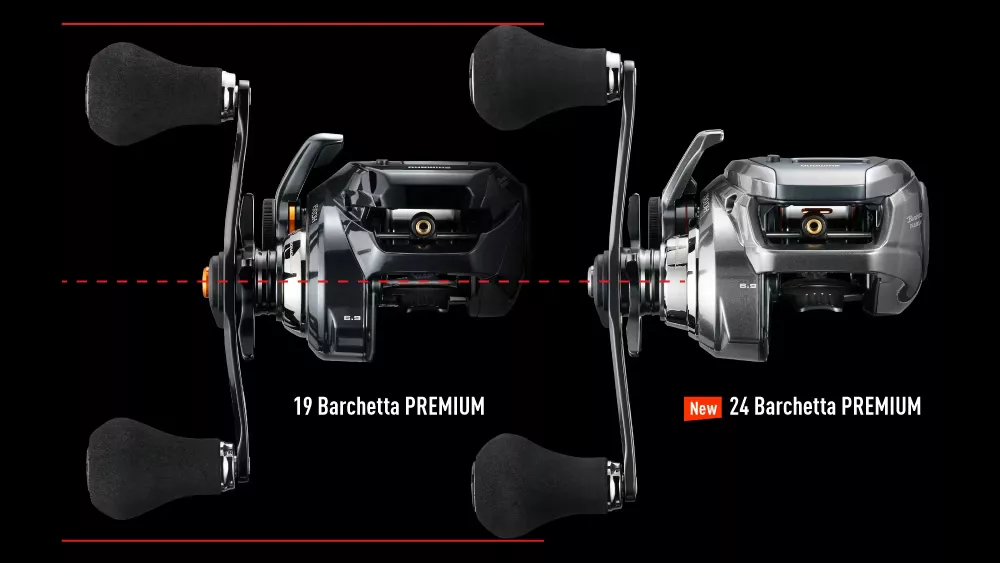 |
| |
|
The 150 and 151 models come equipped with a highly rigid cold-forged 60mm power handle, while the 150DHXG, 151DHXG, 150DH, and 151DH models come equipped with a 60mm long double handle, the longest among Shimano double handle models. Combined with a large knob that can be firmly gripped in the palm of your hand, it improves reeling stability and reduces angler fatigue even during long hours of fishing.
It supports stable, powerful winding without losing power even when using heavy metal squid jigs or weights or when fighting large bluefish
|
| |
| |
| The winding distance alarm supports a streamlined approach. |
| |
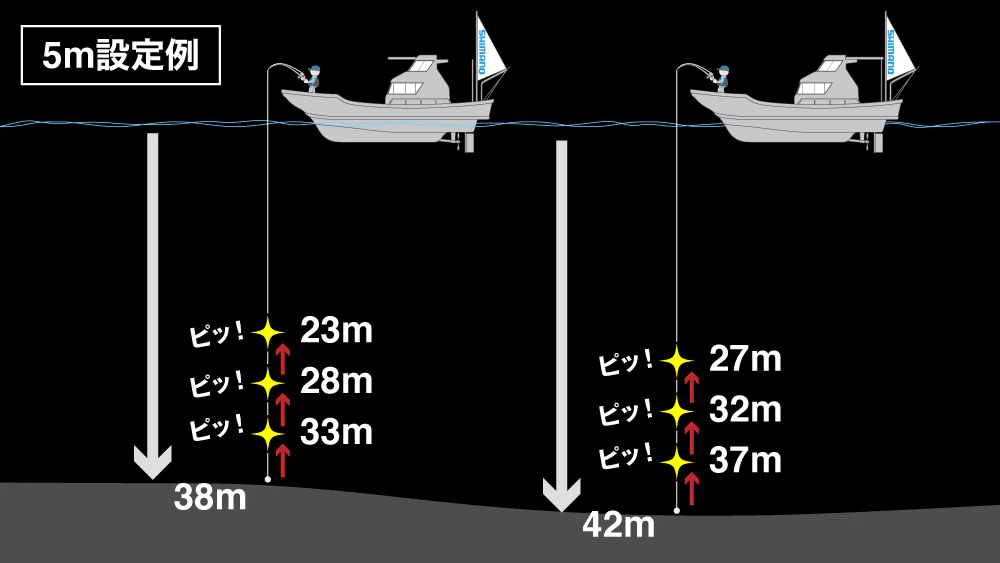 |
| |
| The new winding distance alarm on the Barchetta Premium is a new function that allows you to detect the winding distance without looking at the water depth display on the counter. Measurement begins when you start winding after the line hits the bottom. The alarm sounds up to three times at multiples of the set distance, so you can tell the winding distance by the sound without looking at the counter. For example, when set to 5m (A-5), a notification sound will sound three times every 5m from the bottom up to 15m, informing the angler of the winding distance. This function allows you to make intuitive judgments by hearing the captain's instructions such as 'There's a reaction at from the bottom' or 'Raise when it hits the bottom' without looking at the counter. This is a new function that allows you to concentrate more than ever on the specified depth when winding from the bottom. |
| |
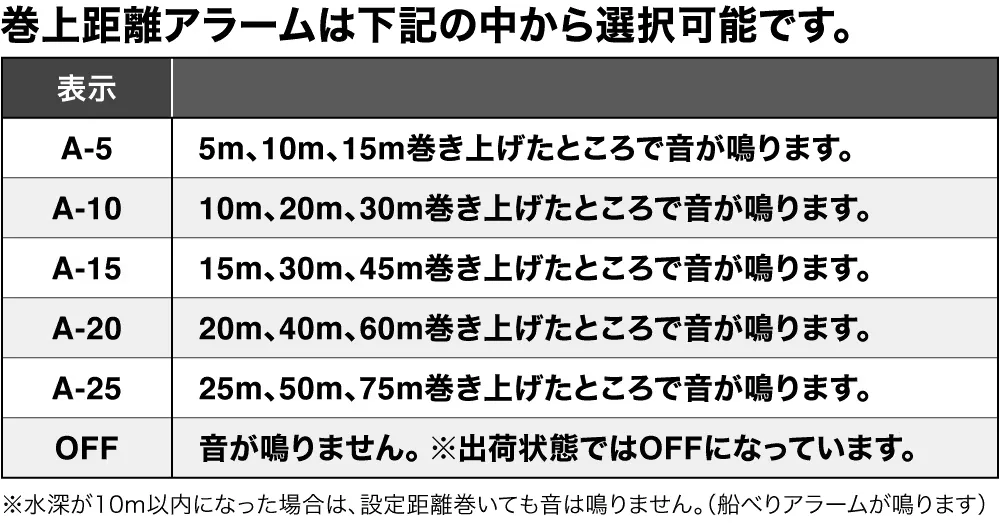 |
| |
| |
| How to set the winding distance alarm |
| |
*The video is explained using Engetsu Premium.
|
| |
*The video is explained using Engetsu Premium.
|
| |
| |
| Making learning to wind thread easier. |
| |
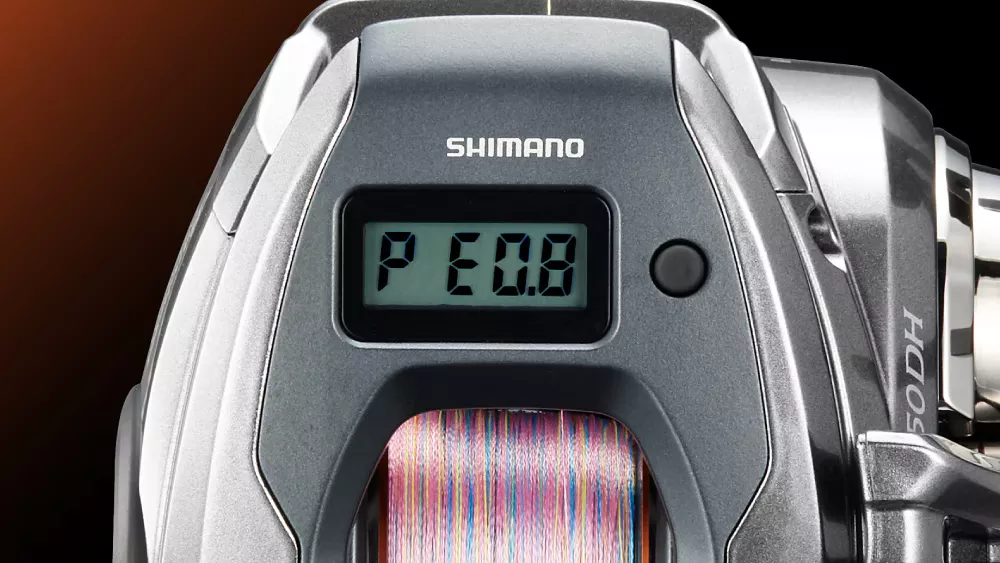 |
| |
|
The line winding learning function memorizes the relationship between spool rotation and the amount of line wound in the digital counter, and uses this relationship to display the water depth. In addition to the learning function of the conventional model, it is equipped with learning data for PE 0.6/0.8/1.0/1.2/1.5, which are frequently used for this size.
Regardless of the amount of backing, as long as the specified line is wound up to about 1 mm from the outer diameter of the spool, it can be used within a practically sufficient margin of error.
Caution for use
The specified line learning is the standard learning value when the specified line (Shimano PE line) is wound, including the underline, up to a position of about 1 mm from the outermost diameter of the spool. The accuracy may decrease depending on the type of line you actually wind, the line tension, and the outer diameter after winding. If you want more reliable accuracy, please learn in E1, E2, L1, or L2 mode.
|
| |
*The video is explained using Engetsu Premium.
|
| |
| |






































































